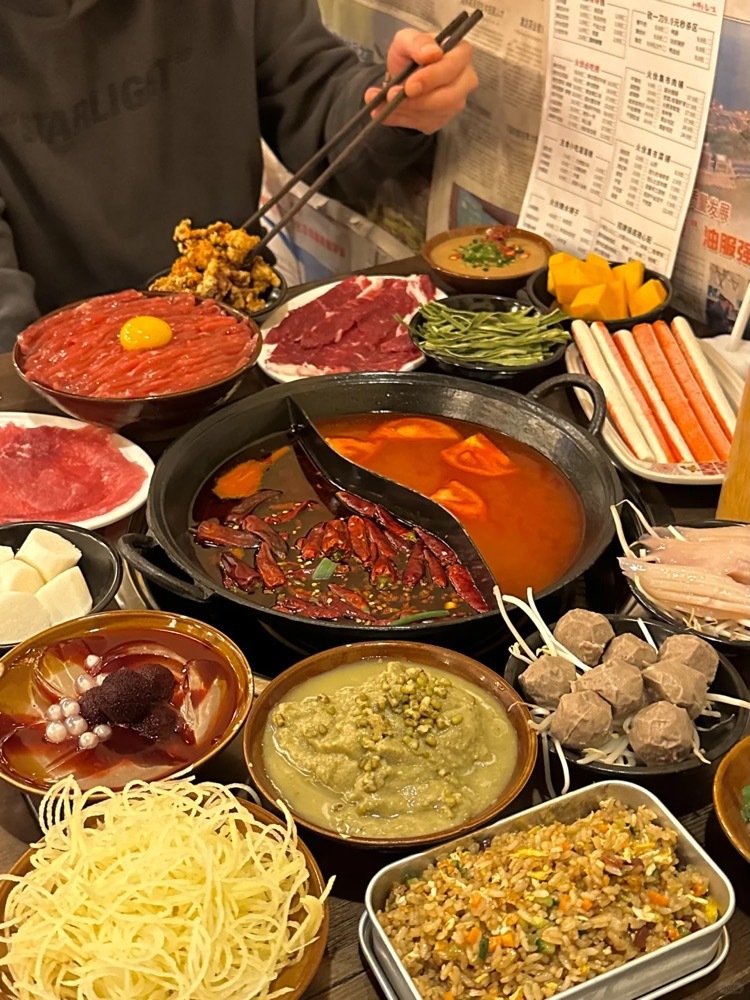As winter approaches, warm dishes have become an ever greater necessity for Chinese people. Among them, hotpot stands out as a favorite due to its wide variety of vegetable and meat options. But how much does a hotpot meal usually cost? 200 RMB? 100 RMB? Many young people are flocking to more economical restaurants to enjoy hotpot meals that are just as delicious as those from pricier establishments.
The trend began with spontaneous online sharing of affordable hotpot spots in different cities. One blogger shared her experience of having a self-service hotpot meal for just 30 RMB (approximately 4 USD). The price included a generous selection of meats and vegetables displayed buffet-style, along with the essential soup base.
A netizen from Taiwan expressed shock, commenting, “Don’t you charge tips or something? 30 RMB is unimaginably cheap!” A mainland netizen humorously replied, “No tips here, and yes, it’s that cheap—but so are our salaries!”
This trend has been captured in the hashtag #花小钱吃大锅 (“Eat Big Pot with Little Money”). The growing preference for affordable hotpot reflects broader economic realities.
Young people are shedding extravagant lifestyles, embracing simpler, more economical choices. In Guizhou, for example, fish hotpot is a common street food. For just 20 to 30 RMB, diners can enjoy numerous slices of fresh fish cooked with traditional Guizhou spices. In Xiamen, hidden alleyway hotpot spots are gaining popularity among frugal customers.

In megacities, however, low-cost hotpot options are less common. Urban residents often face a trade-off, spending more time searching for affordable meals. One blogger described his journey to enjoy hotpot in urban villages — a time-intensive but budget-friendly choice.
For young diners in China, restaurant decor is no longer a key factor. Acceptable taste and affordable prices take priority. While spending less on basic living has become a new philosophy, one thing is certain: a warm hotpot remains an irreplaceable winter delight.
Banner Image via Xiaohongshu












